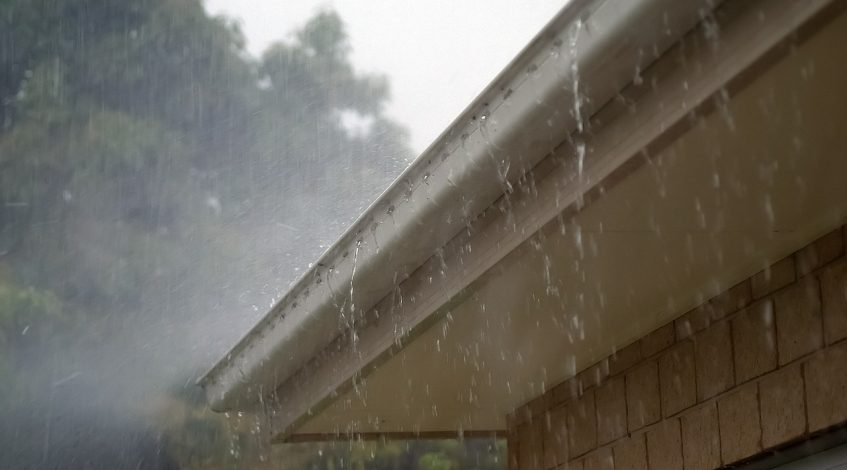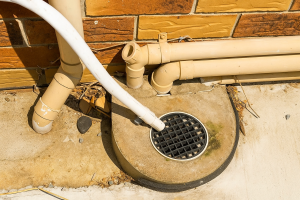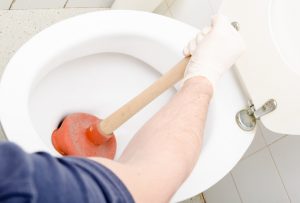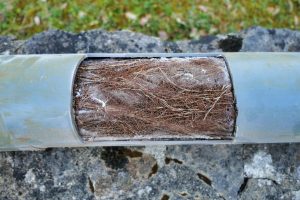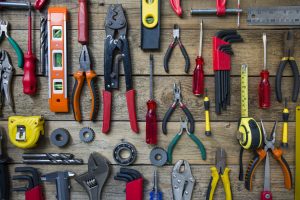If your gutters are overflowing, it may be a blocked downpipe or another issue like a gutter sagging in the middle. It’s a good time to look for any issues with your roofing and promptly attended to any gutter and roof repairs that might be needed.
This blog outlines practical steps you can take when your gutters start to overflow. While some issues can be resolved with a bit of DIY effort, recurring overflows point to deeper drainage problems.
Your best bet for a long-term fix is to call a licensed plumber who can identify the root cause and provide a lasting solution.
Key Takeaways:
- Use a hooked wire to remove the blockage if it is visible.
- Dismantle the entire downpipe if you can’t locate the exact blockage point.
- Clearing underground pipe blockages requires specialist equipment, and damaged sections may need to be dug up and replaced.
Inspect the Pipe and Prepare Safely
Check inside the blocked pipe; you may need to get a ladder to be safe. If the blockage is visible, use a length of wire with one of the ends bent into a hook shape to hook the blockage out.
Chances are the released material (if any) will most likely fall down the pipe, thus causing another blockage in the drain. You can avoid this by placing a piece of wood over the drain, right at the bottom of the pipe, before starting the unblocking process.
In cases where it is impossible to hook the blockage out, try to break the blockage by running the wire up and down the pipe. Once the blockage has fallen away, flush down the remaining material by pouring buckets of water down the pipe.
Detach Pipe Sections Carefully and Check for Blockages
These blockages can be difficult to remove, especially if the downpipe has a swan-neck shape.
If the blockage can’t be pinpointed, dismantling the entire downpipe may be the only option.
To increase your chances of finding the blockage, tap the pipe along its length at intervals while listening to the sounds. A more solid sound indicates the presence of a blockage.
Having pinpointed where the blockage might be, proceed to carefully dismantle the system.
- Start by removing the two screws holding the lowest pipe clip to the wall.
- For two-part pipe clips, detach only the pipe ring and leave the backplate in place.
- Use gentle force to remove the loose part of the downpipe.
- Inspect the opened section to identify any visible blockage.
- Continue removing additional clips and pipe sections as needed until the blocked area is found.
- Once located, dislodge the blockage using a wire or bamboo stick with firm, steady pressure.
There may be a second blockage further up the pipe in some cases. You can identify such by pouring some water down the pipe from the top. Once there are no more blockages, replace the sections of the pipe and re-fix the wall clips one after the other.
No-Dig Pipe Relining – A Cleaner Repair Solution

If you’ve cleared a blocked downpipe of debris and the water still doesn’t drain then the problem could be further down.
A blockage in underground pipes means specialist equipment is needed to clear it. In some cases, the drain may need to be dug up and replaced if it is damaged or collapsed.
But the innovative no-dig drain pipe relining allows you to fix your pipes without the messy digging. In any case, you need the best local blocked drain plumbers to guarantee it’s diagnosed and fixed properly.
How Do You Prevent Downpipe Blockages?
Install Caps and Mesh to Trap Leaves Without Interrupting Flow
You will find suitable wire mesh or plastic caps that can fit tightly conveniently into your downpipe size, without slipping down to cause further blockage. This helps to sieve out the dirt and leaves while the water passes through.
The gutter in some older houses is designed to feed into a hopper at the top of a downpipe. In such cases, get a galvanised chicken wire (or a mesh of similar size) and fix it over the top of the hopper, while securing it with a thin galvanised wire.
Prune Nearby Trees to Prevent Structural Damage
If you have trees overhanging your house, they would likely cause blockages. So, cut them back. For trees that are outside your property, make sure that you get permission before you proceed with the cutting. Be careful not to let the branches hit the roof or gutter while cutting them.
Replace Cracked Cast-Iron Downpipes to Prevent Further Damage
Chances of a blockage becoming more problematic are higher in downpipes made of cast-iron. In such cases, blockage tends to freeze and expand, while eventually cracking the downpipe, especially when the weather is cold. The best fix, in this case, would be to replace the cracked cast-iron downpipe.
From Sydney to Newcastle, We’ve Got Reliable Plumbers Ready
If you feel like you’re not up to the task or you lack the equipment needed, you need a licenced local plumber to handle the task for you. Best Plumbers Club members are reputable local plumbers in your area so do not hesitate to get in touch today!
Sydney plumbers, Brisbane plumbers, Adelaide plumbers, Newcastle plumbers – no matter where you are Best Plumbers Club has you covered.
Frequently Asked Questions
How to check if a downpipe is blocked?
Look for water overflowing during rain or pooling around the base of the downpipe. Tap along the pipe and listen for dull, solid sounds as these indicate a blockage. You can also run water from a hose into the gutter to see if it drains properly.
How to clear blocked downpipe?
Use a hooked wire or garden hose to remove it. For hidden blockages, dismantle the pipe section by section and clear the debris manually.
How to fix a blocked downpipe?
Start by removing any debris at the top or in visible sections. If the blockage is deep or underground, use a drain rod or call a licensed plumber for specialist tools and possible pipe repair or replacement.

